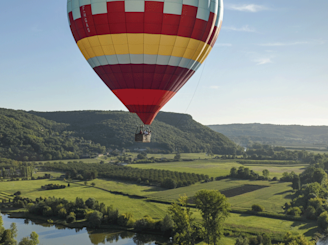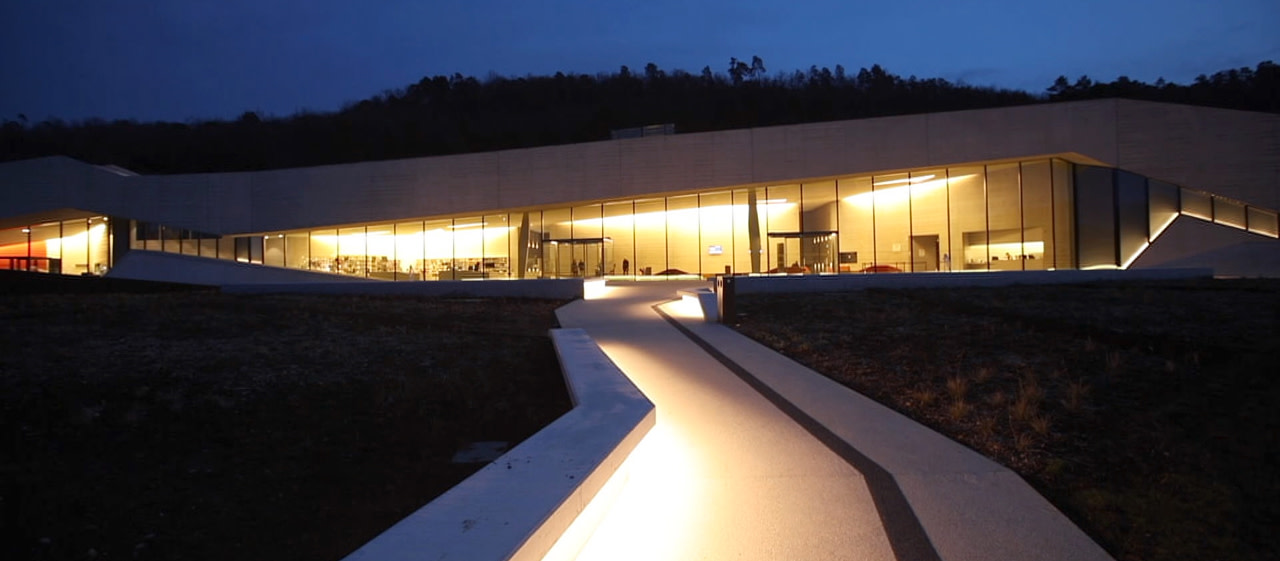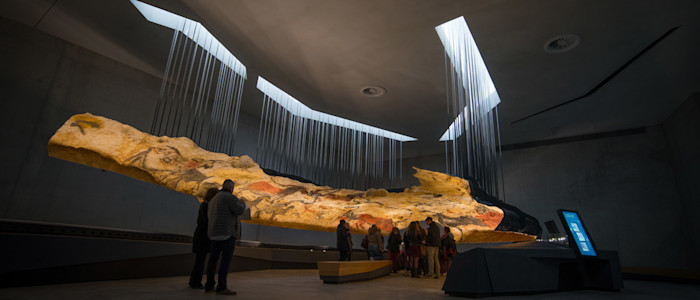
In partnership with Easyvoyage and France.fr
This 150-metre long semi-underground building fits perfectly into the landscape, melting seamlessly into the woodland of the hill behind it. Only the glazed frontage of this raw concrete tunnel facing the town of Montignac allows natural light to penetrate. In front of it, the large expanse of meadow takes on many colours, depending on the season, and two wide expanses of water capture the light and the surrounding natural world to decorate the facade with ever-changing reflections. Once inside, you are immediately greeted and orientated. To the left of this enormous light-filled space is the shop and beyond it, the Lascaux café; to the right is the ticket desk, toilets, bag drop and the entrance to the centre’s seminar rooms.
The intention of architect Kjetil Trædal Thorsen is to prepare the visitor gradually for the major experience of discovering the cave paintings for the first time. And he succeeds brilliantly.
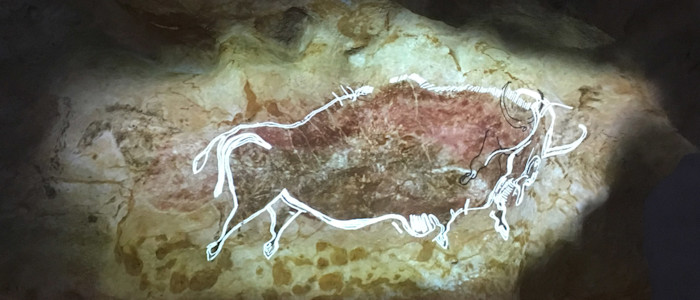
Discovered on 20 September 1940 as the result of an amazing coincidence of circumstances after Robot, the dog belonging to the young Marcel Ravidat, disappeared down a hole in pursuit of a rabbit.
Intrigued by the hole, Marcel returned a few days later with his friends Georges, Simon and Jacques. Together, they decided to enlarge the hole, which was all the easier since a storm had recently uprooted a large tree. When they saw the first paintings, the four friends swore not to tell anyone about their discovery, believing themselves to be in a secret tunnel near the château that might led to buried treasure.
Just four days later, they revealed their secret to their schoolteacher Léon Laval, who suspected it was a ruse to trap him in the hole. Nevertheless, he alerted the Abbé Breuil, who grasped the magnitude of the discovery immediately. Known as the Pope of French Prehistory, Henry Breuil would later become the first holder of the Collège de France chair in prehistory.
And this is how the guided tour of this identical facsimile of the cave begins. The cave itself was closed to the public in 1963 by André Malraux to ensure its ongoing conservation.
You then enter a ‘rock fault’ to become increasingly flanked by towering walls of raw concrete, whose horizontal strata recall that of natural rock, all lit by daylight from above.
This is the corridor that guides visitors between the exhibition spaces. Using the multimedia guide, every visitor can then drill down to find more information about their discoveries.
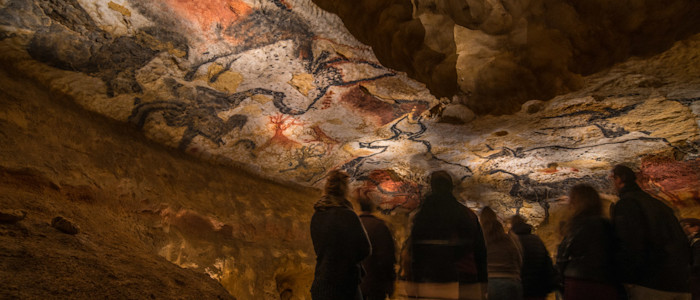
In the workshop, I felt that I was touching the paintings with my own fingers to examine the smallest details. I discovered, as only insiders can, the famous paintings of the shaft, including that of the man with the bird-like head. I had fun in the virtual world creating my own prehistoric painting using the drawing instruments of the time: animal hair stencil, manganese oxide pigments, etc. The 3D film led me into thoughts of what a dialogue between Cro-Magnon and 21st century man might be like. Lastly, I played exhibition curator by using the multimedia guide to select my favourite pieces inspired by cave art, which were then displayed on an enormous image wall just for me.
Just two hours from Bordeaux, 1½ hours from Limoges and 3 hours from Poitiers by car, Lascaux VI is a wonderful place to visit, and one that requires you to invest your time to fully experience what it has to offer in terms of its serenity and the questions it poses.
Information
Bright contemporary-style restaurant. Fresh pastries and a choice of teas and coffees. One-plate set lunch and full menu.
A choice of passes: Family, Prehistory (3 sites) and Prehistory & Geology (4 sites)
Recommended time to allow for your visit: 2½ hours
Free parking, no pets, no pushchairs and no bags.
The temperature inside the cave is a constant 13°C, so I recommend taking a sweater just in case, regardless of the temperature outside.

